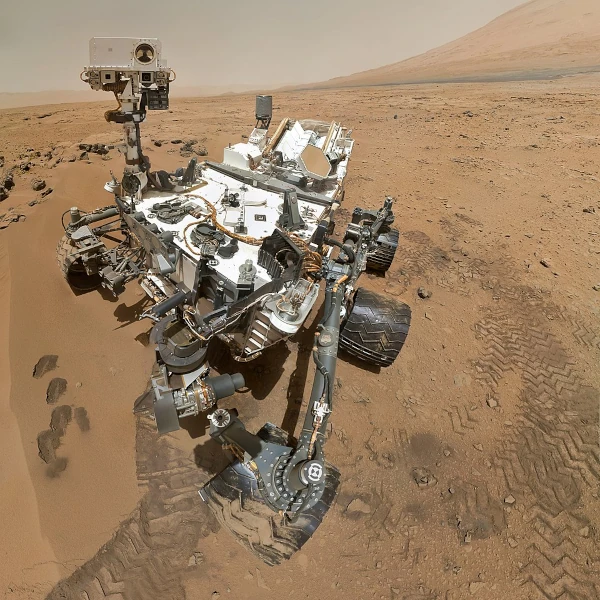
The exploration of Mars is marked by ambitious attempts, often crowned with success, but also by spectacular failures. The red planet, a privileged target of space agencies since the 1960s, has long been nicknamed the "graveyard of probes" due to the numerous initial failures. Out of nearly fifty missions, more than a third have failed, sometimes at launch, sometimes on approach to Mars, and others during landing. These failures have helped understand the complexities of Martian atmospheric entry, interplanetary communication delays, and the subtleties of orbital navigation.
Since Mariner 4 in 1965, the first probe to transmit images of Mars, progress has been constant. The Viking missions of the 1970s demonstrated the feasibility of robotic landings. The Spirit and Opportunity rovers showed the robustness of mobile robots, while Curiosity perfected the sky crane landing. Finally, Perseverance represents the pinnacle of current Martian robotics, with its ability to collect samples and test in situ oxygen production thanks to the MOXIE experiment.
| Mission | Launch Year | Type | Country / Agency | Status | Comments |
|---|---|---|---|---|---|
| Mars 1 | 1962 | Flyby | USSR | Partial | Contact lost before flyby |
| Mariner 3 | 1964 | Flyby | USA | Failure | Defective shroud |
| Mariner 4 | 1964 | Flyby | USA | Success | First close-up images |
| Mariner 6/7 | 1969 | Flybys | USA | Success | Atmospheric photographs |
| Mariner 8 | 1971 | Orbiter | USA | Failure | Launch failure |
| Mariner 9 | 1971 | Orbiter | USA | Success | 1st orbiter around Mars |
| Mars 2 | 1971 | Orbiter + lander | USSR | Partial failure | Lander crashed |
| Mars 3 | 1971 | Orbiter + lander | USSR | Partial | Landing and 110 s transmission |
| Mars 4/5/6/7 | 1973 | Orbiter/landers | USSR | Mixed | Partial orbiters, ineffective landers |
| Viking 1/2 | 1975 | Orbiter + lander | USA | Success | Biological experiments, surface images |
| Phobos 1 | 1988 | Orbiter | USSR | Failure | Lost en route |
| Phobos 2 | 1988 | Orbiter | USSR | Partial | Orbit insertion, contact lost before Phobos |
| Mars Observer | 1992 | Orbiter | USA | Failure | Contact lost before insertion |
| Mars 96 | 1996 | Orbiter + lander | Russia | Failure | Never left Earth orbit |
| Mars Global Surveyor | 1996 | Orbiter | USA | Success | Detailed mapping |
| Mars Pathfinder / Sojourner | 1996 | Lander + rover | USA | Success | First rover on Mars |
| Nozomi (Planet-B) | 1998 | Orbiter | Japan | Failure | No orbital insertion |
| Mars Climate Orbiter | 1998 | Orbiter | USA | Failure | Metric/imperial unit error |
| Mars Polar Lander / Deep Space 2 | 1999 | Lander + penetrators | USA | Failure | Contact lost at atmospheric entry |
| 2001 Mars Odyssey | 2001 | Orbiter | USA | Success | Data reception >20 years |
| Mars Express / Beagle 2 | 2003 | Orbiter + lander | ESA | Orbiter success, Beagle 2 partial | Lander not deployed |
| Spirit and Opportunity | 2003 | Rovers | USA | Success | Duration > 15 years combined |
| Mars Reconnaissance Orbiter | 2005 | Orbiter | USA | Success | Data relay, imaging |
| Phoenix | 2007 | Lander | USA | Success | Discovery of polar ice, soil chemistry |
| Phobos-Grunt / Yinghuo-1 | 2011 | Sample return | Russia / China | Failure | Did not leave Earth orbit |
| Curiosity (MSL) | 2011 | Rover | USA | Success | Chemical analysis, habitability |
| Mangalyaan / MOM | 2013 | Orbiter | India | Success | Mapping, methane, spectroscopy |
| MAVEN | 2013 | Orbiter | USA | Success | Climate, atmosphere |
| InSight | 2018 | Lander | USA | Success | Interior study, seismic |
| Tianwen-1 / Zhurong | 2020 | Orbiter + Lander + Rover | China | Success | Rover + operational orbiter |
| Hope (Emirates Mars Mission) | 2020 | Orbiter | UAE | Success | Global climate study |
| Perseverance / Ingenuity | 2020 | Rover + Helicopter | USA | Success | Samples, Ingenuity flight |
Main sources: NASA mission chronology, IMEWG, Wikipedia "List of missions to Mars".